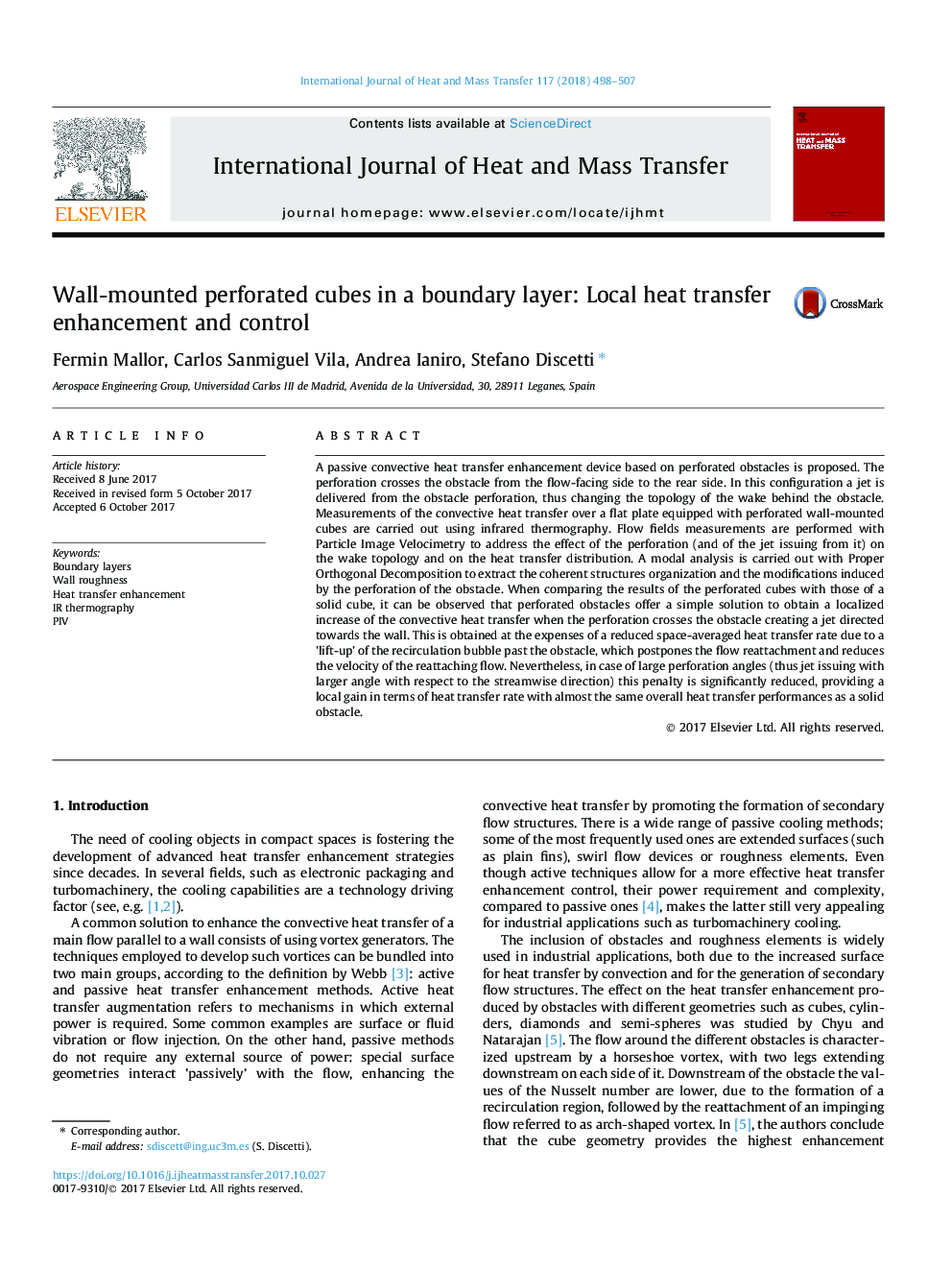| Article ID | Journal | Published Year | Pages | File Type |
|---|---|---|---|---|
| 4993417 | International Journal of Heat and Mass Transfer | 2018 | 10 Pages |
Abstract
A passive convective heat transfer enhancement device based on perforated obstacles is proposed. The perforation crosses the obstacle from the flow-facing side to the rear side. In this configuration a jet is delivered from the obstacle perforation, thus changing the topology of the wake behind the obstacle. Measurements of the convective heat transfer over a flat plate equipped with perforated wall-mounted cubes are carried out using infrared thermography. Flow fields measurements are performed with Particle Image Velocimetry to address the effect of the perforation (and of the jet issuing from it) on the wake topology and on the heat transfer distribution. A modal analysis is carried out with Proper Orthogonal Decomposition to extract the coherent structures organization and the modifications induced by the perforation of the obstacle. When comparing the results of the perforated cubes with those of a solid cube, it can be observed that perforated obstacles offer a simple solution to obtain a localized increase of the convective heat transfer when the perforation crosses the obstacle creating a jet directed towards the wall. This is obtained at the expenses of a reduced space-averaged heat transfer rate due to a 'lift-up' of the recirculation bubble past the obstacle, which postpones the flow reattachment and reduces the velocity of the reattaching flow. Nevertheless, in case of large perforation angles (thus jet issuing with larger angle with respect to the streamwise direction) this penalty is significantly reduced, providing a local gain in terms of heat transfer rate with almost the same overall heat transfer performances as a solid obstacle.
Related Topics
Physical Sciences and Engineering
Chemical Engineering
Fluid Flow and Transfer Processes
Authors
Fermin Mallor, Carlos Sanmiguel Vila, Andrea Ianiro, Stefano Discetti,
